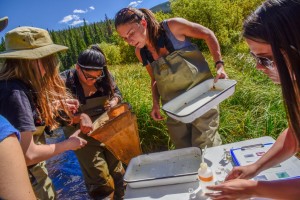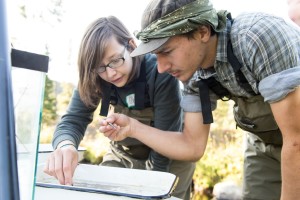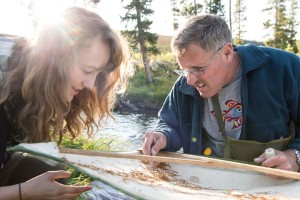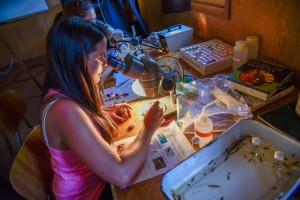
Passion for biodiversity
How many species of grasses, trees, flowers, mammals, fish, insects, and birds live at Colorado State University’s Mountain Campus? The CSU Chapter of Strategies for Ecology Education, Diversity, and Sustainability found 270 unique species calling the campus home at their SEEDS Bioblitz.
A Bioblitz is a rapid species inventory conducted by scientists who bring along non-scientists to show off their passion for biodiversity and how they collect field data.
Encouraging careers in science

In this case, SEEDS engaged CSU professors, professionals from local agencies, and graduate students to work with high school and undergraduate students recruited from local Fort Collins organizations dedicated to working with low-income populations, local community colleges and students engaged with CSU’s Student Diversity Programs and Services Offices.
Organizers wanted to create an experience to encourage students to consider careers in the sciences. “SEEDS is open to all students who are interested in getting involved in ecology education, sustainability and diversity,” said club president and conservation biology graduate student Sara Bombaci. “The club decided to do an activity that would be a fun and engaging way to show off ecology careers to students who don’t typically choose them.”
Finding distinct species
Scientists from CSU’s Warner College of Natural Resources and College of Agricultural Sciences turned out to comb through the Mountain Campus in the hopes of finding distinct species to demonstrate the wide diversity of life found at the campus.

Professor Boris Kondratieff, from the Department of Bioagricultural Sciences and Pest Management even found a few standouts in the group of 130 different insects identified with the students. “The two best insects collected were a large series of the Rockies Forestfly, Amphinemura banksi,” Kondratieff said. “The males of the stonefly (Plecoptera) were exceptionally small, an unusually rare phenoptype in Colorado. Additionally, the beautiful green sweat bee, Agapostemon virescens, despite being
widespread in Colorado, is always a good catch!”
In addition to collecting insects with bug nets, participants sought out fish using electro-fishing techniques, identified birds by sight and sound and with mist nets, setup wildlife camera traps, and got familiar with all the different grasses, trees, and flowers in the valley. After their field observations the students worked with the data back in the campus’s research labs.
‘Couldn’t ask for a better setting’

“The event was tremendous, and we couldn’t have asked for a better setting to expose students to ecology,” said Bombaci. “A number of students have touched base wanting to know more about the species they helped find, and a few said they were interested in careers in ecology.”
SEEDS campus chapters, supported by the Ecological Society of America, are dedicated to offering these kinds of hands-on, engaging experiences with ecology. Interested students should visit the club’s webpage or contact Bombaci at sbombaci@rams.colostate.edu to find out more about the club.